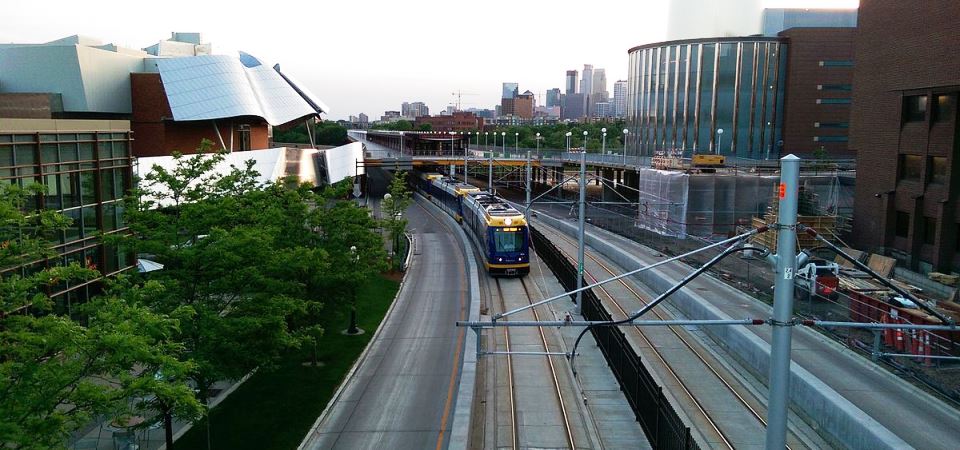More than 45,000 people in Minneapolis and Saint Paul, Minnesota rode the Green Line on its first day, June 14, 2014. It was the first time trains had connected the Twin Cities’ downtowns in more than 60 years.
The $957 million project had taken eight years to design and build, but it was 30 years in the making if you counted the time it took to line up political support. Today, the Green Line is the most popular of the Twin Cities’ two light-rail lines, carrying 40,000 people on weekdays, smashing ridership forecasts by almost 50 percent.
The story of how Saint Paul and Minneapolis did it is full of lessons for other cities hoping to show that rail can be a key to revival. Twin Cities leaders found ways to persuade reluctant Republican legislators to contribute state funding to transit and, when that support dwindled, figured out how to fund a greater share of it themselves.
They figured out that converting an old streetcar route back to transit after a half-century of automobile domination can be a wrenching change, one that demands special care to help small businesses survive.
And perhaps most significantly, downtown power brokers had to be willing to significantly alter their plans when low-income people of color and immigrant businesspeople along the route insisted that a rail line that bypassed them, while benefiting people traveling between two downtowns, was not acceptable.
Instead, they argued, the near-billion-dollar project had to improve the lives of the people who live and work along the route.
Photo of Green line during 2014 inauguration by Michael Hicks via Wikipedia.

